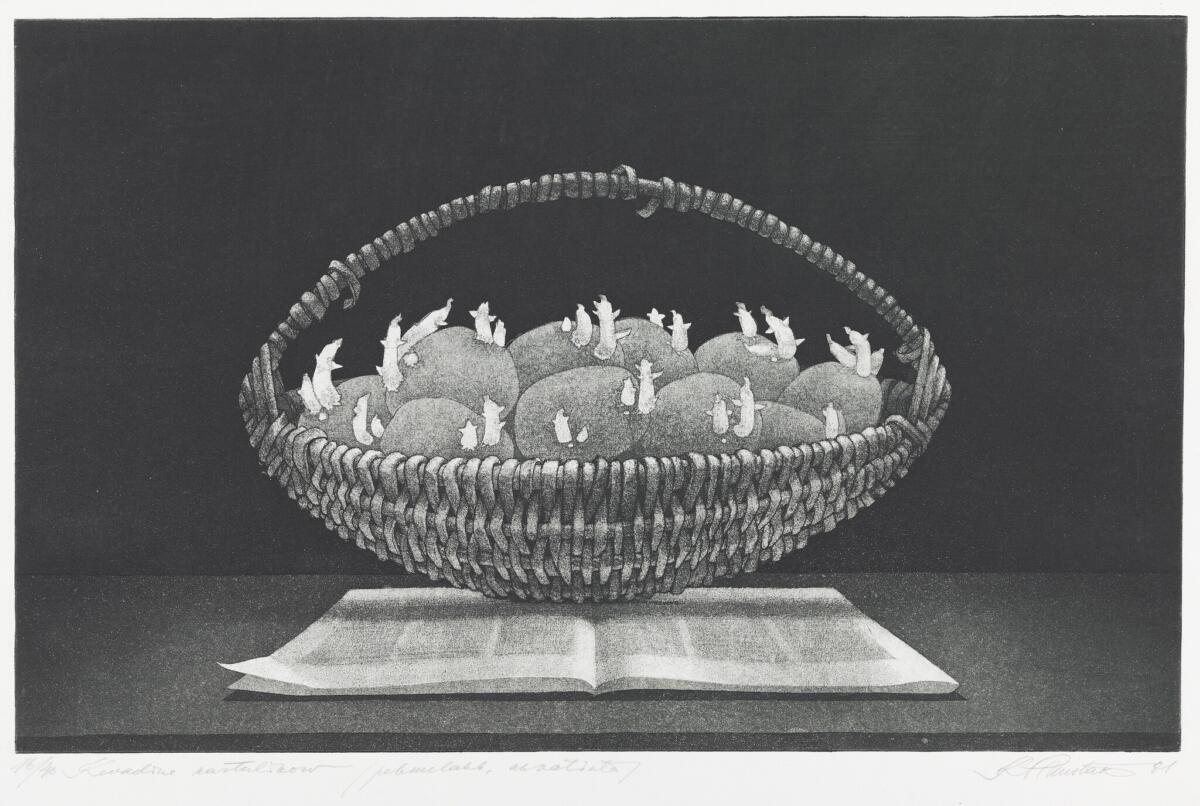
You came along the path of
many years of longing,
to tread these village streets with me.
Yonder, cowbells are jingling
the tunes of fresh warm milk,
and sheep are bleaching
their rustic fleece in the sun.
Your solitary path shimmers like a pilgrimage
through the black gorge of your eyes,
but every prayer comes to an end
and comes to life.
Concordia Klar (1960s)
In the second half of the 1960s, a remarkable number of female artists emerged who regenerated graphic art in the late-Soviet period in various ways. The exhibition Through the Black Gorge of Your Eyes brings together works by Concordia Klar (1938–2004), Silvi Liiva (1941), Marju Mutsu (1941–1980), Naima Neidre (1943), Kaisa Puustak (1945), Marje Taska (1955), Vive Tolli (1928–2020), Aili Vint (1941), Mare Vint (1942–2020) and Marje Üksine (1945) from the 1960s–1980s. Their art serves as a keyhole through which the peculiarities of Soviet graphic art are revealed. Yet, these works and the topics they deal with also position themselves smoothly in today’s art scene.
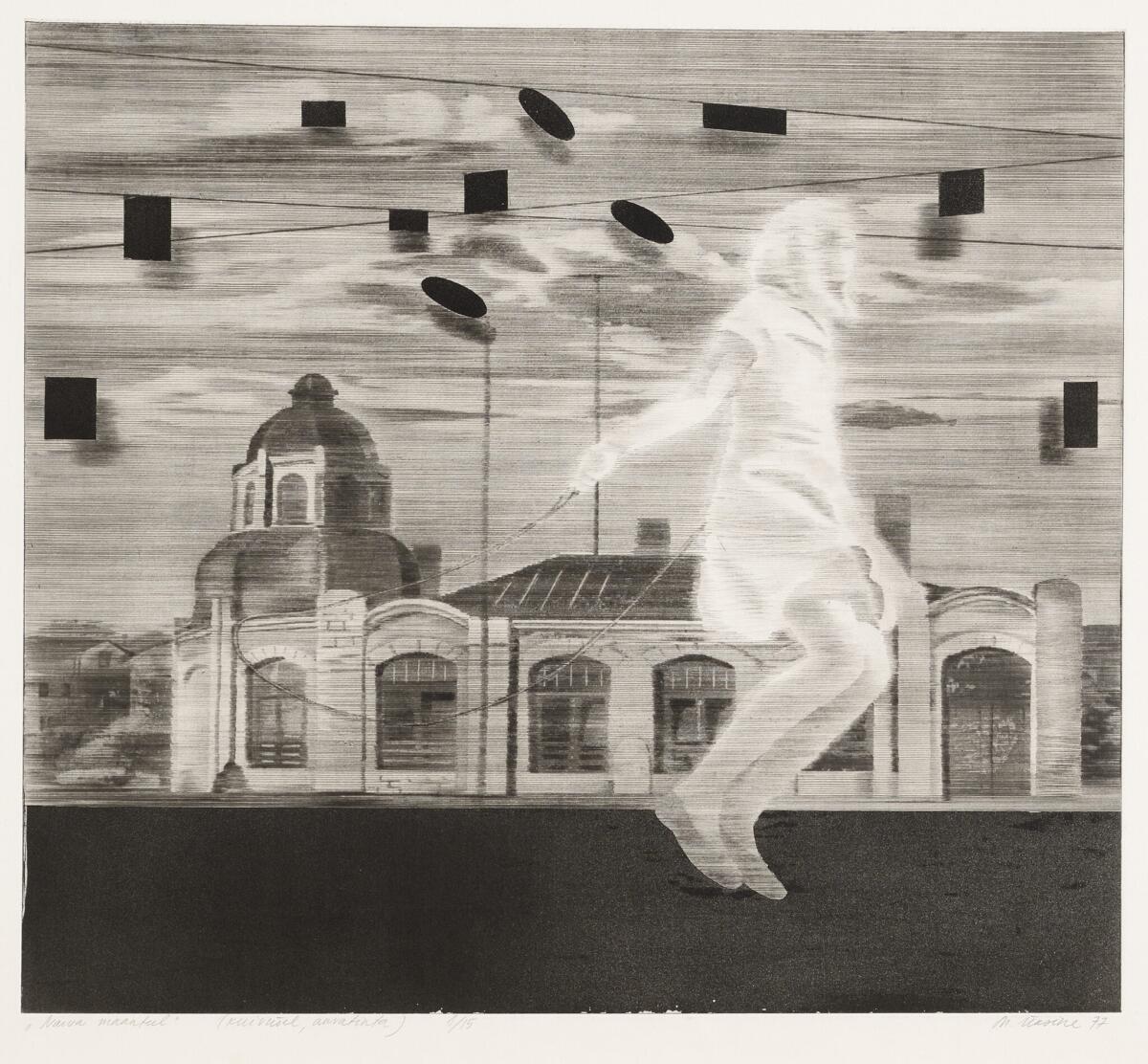



The pictorial spaces, ranging from minimalist to erumpent and lush, reflect the artists’ diverse relationships with the then existing environments and ways of being. The keyword linking the different artistic positions of the artists under observation is hybridity. By synthesising artificial and natural elements and casually setting up dialogues between phenomena, materials, stories, bodies, myths and spaces, they create new compounds. Here, hybridity is interpreted as an open, non-hierarchical, empathic, non-binary and attentive relationship created between the elements of a picture, which also accentuates the complexities of various phenomena. In these works a boundary, or the graphic line denoting it, is often a negotiated, porous, conditional and open possibility. Creating rupturing conflicts within the pictorial space does not appear to have been the aim of these graphic artists. On the contrary, they rearranged reality and the world around them in ways that would prevent it from disintegrating or crumbling into conflicting particles, creating instead a new synergy stemming from the intertwining of different elements. Such an approach seems to offer our present crisis-ridden times an important incentive to move forward.
The display has conditionally been divided into different chapters that unfold as the viewer passes through the exhibition space: the relationship between humans and nature, different approaches to the body, roles assigned to people socially or taken on personally, interfaces with heritage and folklore, the impact of human activity on the environment and its repercussions, the poetry of mundane reality, the dark vibrations of existence, and the multifaceted experiences of womanhood, motherhood and ageing. An important notion is the circle of friends, reflected in the polyphonic conversation created between different artistic positions and approaches.
Perhaps the rich legacy of female graphic artists, in which we find such themes as attentiveness towards one’s surroundings, various facets of womanhood, appreciation and visualisation of care and intimacy, friendship and other social and human issues, will offer clues and fulcra necessary to survive the current times and to envisage alternatives.
The contemporary performance artists Jette Loona Hermanis, Kaja Kann and Keithy Kuuspu have been invited to relate performatively to the works displayed.
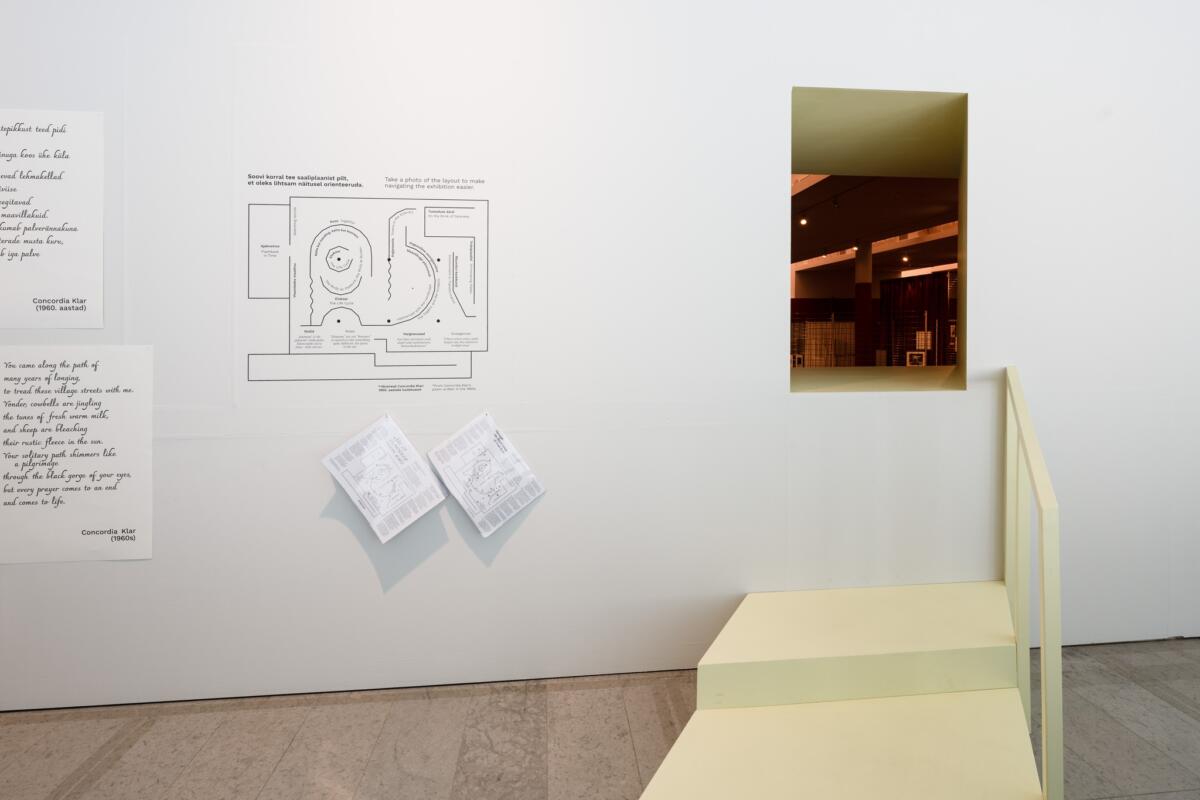
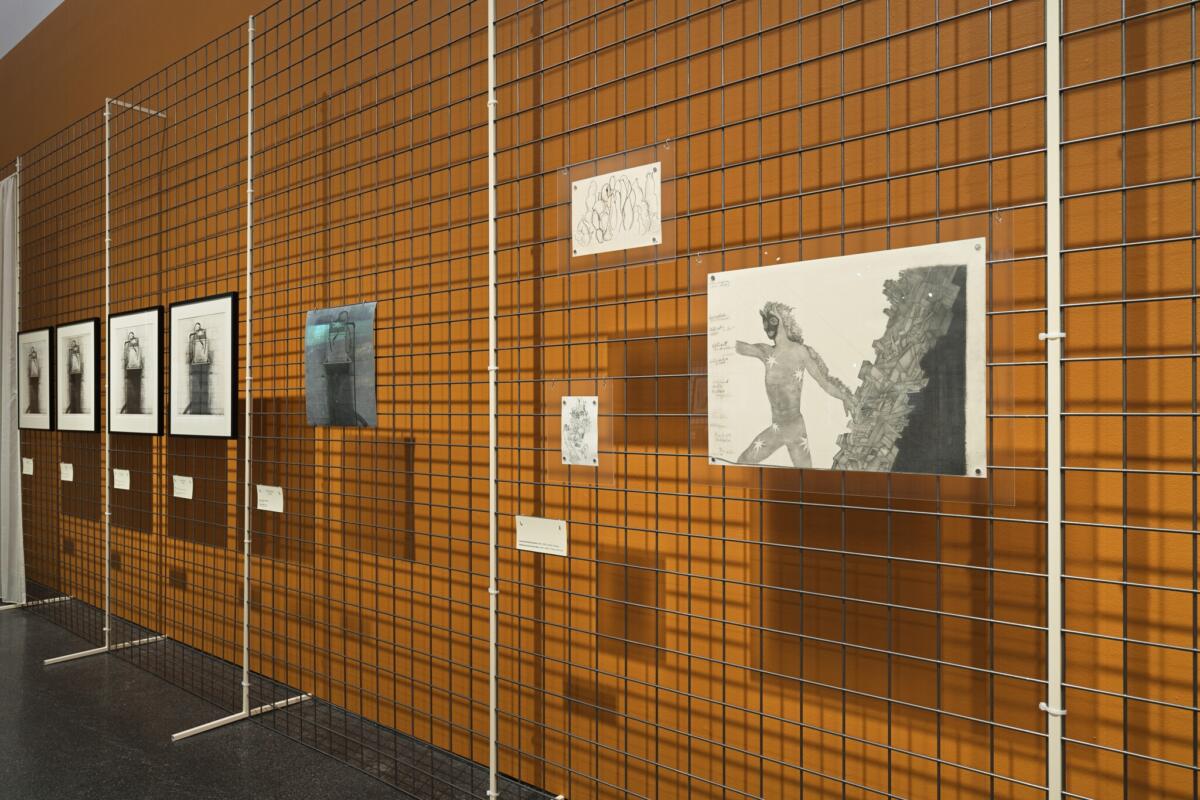
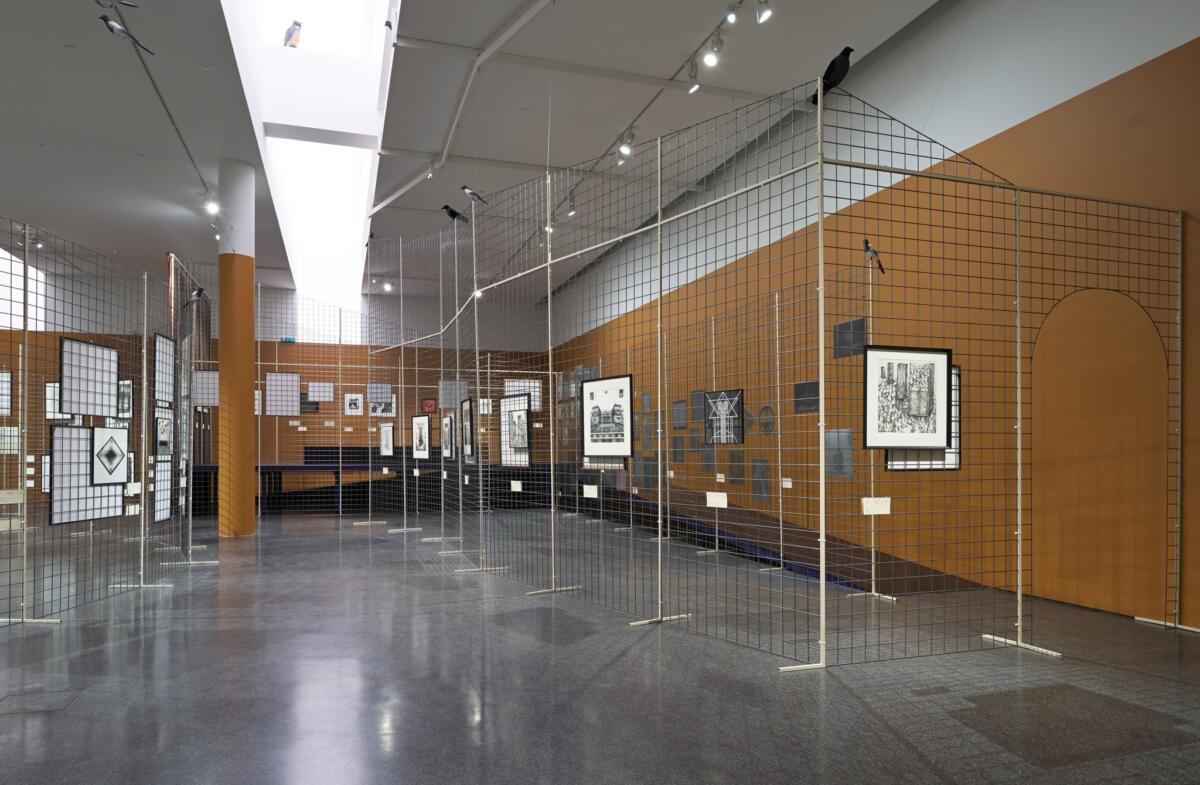
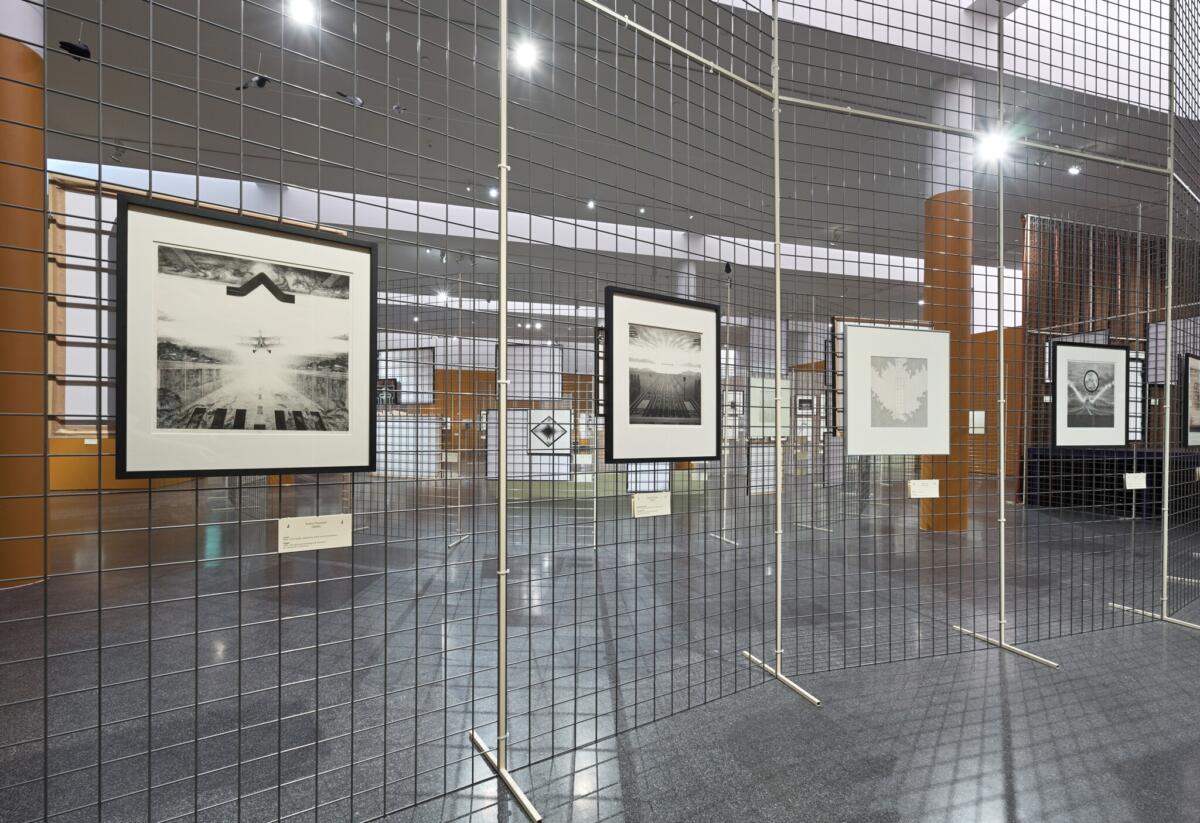

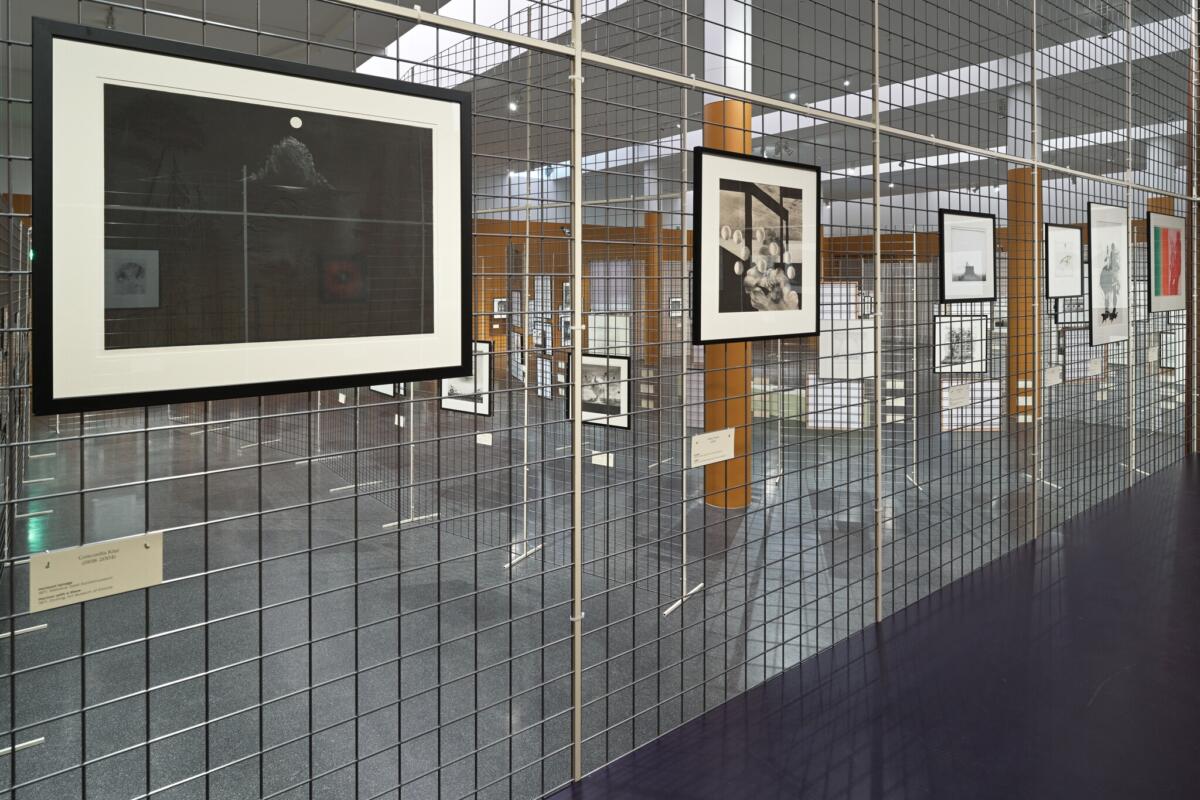
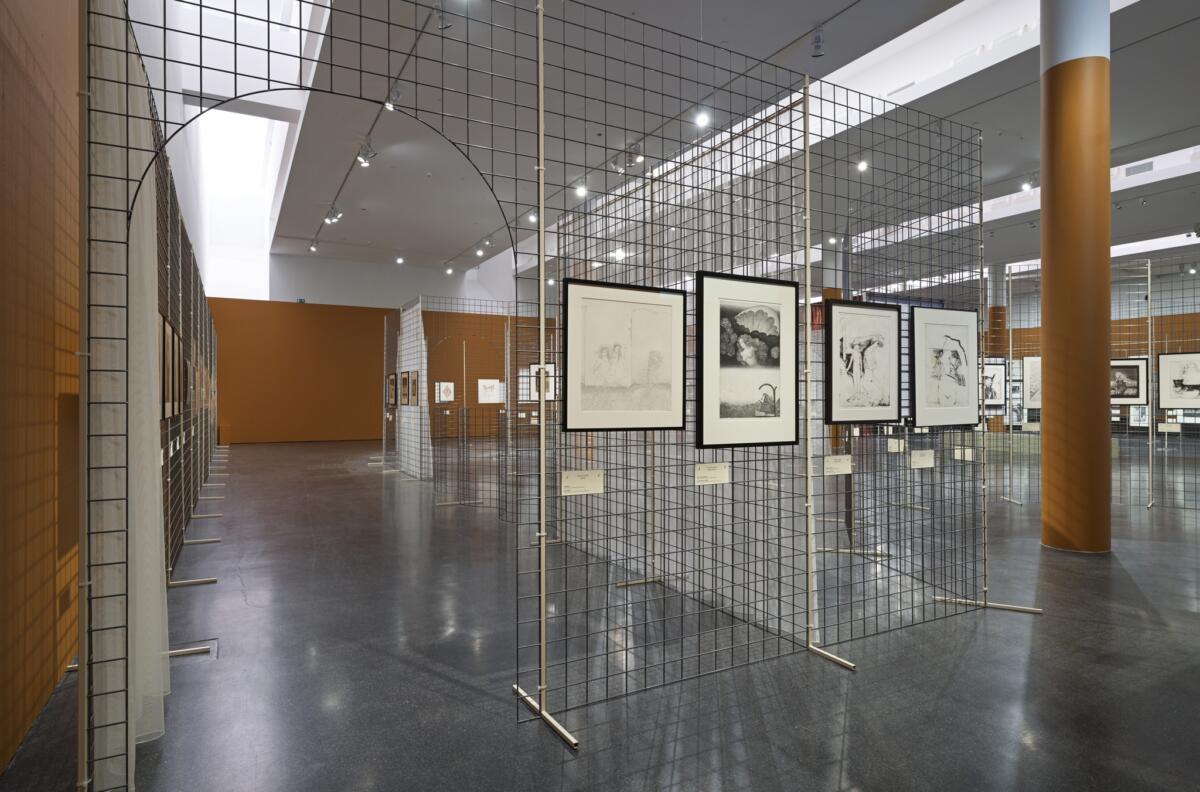

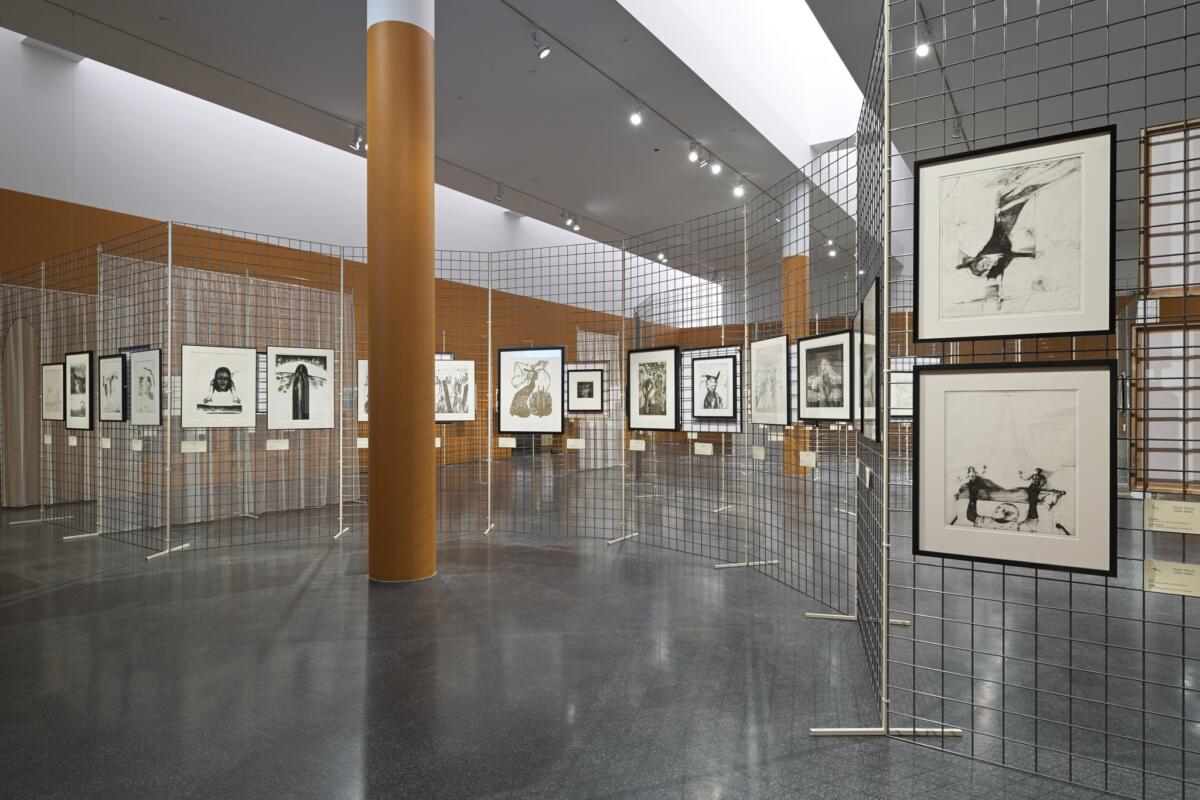
Imprint
| Artist | Concordia Klar, Silvi Liiva, Marju Mutsu, Naima Neidre, Kaisa Puustak, Marje Taska, Vive Tolli, Aili Vint, Mare Vint, Marje Üksine |
| Exhibition | Through the Black Gorge of Your Eyes |
| Place / venue | Art Museum of Estonia |
| Dates | 16.06.–05.11.2023 |
| Curated by | Maria Arusoo, Eha Komissarov, Eda Tuulberg |
| Exhibition design | Edith Karlson, Maria Luiga, Brit Pavelson |
| Photos | Stanislav Stepaško |
| Index | Art Museum of Estonia Brit Pavelson Eda Tuulberg Edith Karlson Eha Komissarov Estonia Maria Arusoo Maria Luiga Tallinn |
